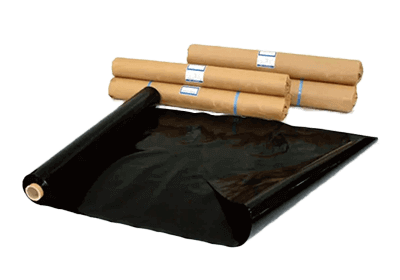What Is a Root Barrier?

Root barriers are sheets that are embedded in the ground to keep various roots and trees out.
It prevents roots from lifting up the soil, exposing the roots themselves, and damaging various items buried in the ground. Root barriers, also called root resistant sheets, are strong, tear-resistant sheets that can withstand pressure from the soil and roots.
In fact, if you remove a root barrier sheet that has been in place for some time, you will see that the underground stems are against the sides of the root barrier sheet and changing the direction of growth along the sides. Root barriers vary depending on the product, such as whether they are permeable and whether or not chemicals are used.
Uses of Root Barriers
Root barriers are embedded in the ground to control the spread of roots. Specific locations include fields, gardens, and areas with underground pipes.
Features of Root Barriers
Advantages
Advantages of root barriers include preventing the lifting of the ground, exposure of roots to the ground, and penetration of pipes embedded in the ground. Roots of trees, bamboos, and other plants will grow regardless of obstructions if left untreated.
By burying root barriers in the ground, it is possible to limit the extent of root penetration. Root barriers are very strong, tear-resistant, and resistant to soil and root pressure.
Disadvantages
Disadvantages of root barriers include high cost, labor-intensive installation, and negative effects on plant growth if not used properly.
In particular, the cost and labor involved are unavoidably high in the early stages. In addition, improper use of root barriers can result in poor rooting of plants. As a result, plants are more likely to fall over in the wind, which is a disadvantage. It is important to understand the characteristics of root barriers and to use them correctly.
Types of Root Barriers
There are different types of root barriers, depending on their compatibility with water and whether chemicals are used. It is important to understand the type that best suits the purpose of use.
1. Physical Control
Root barriers made of dense non-woven fabrics or plastic molded into sheets can physically control the growth of roots. Root barriers that do not allow water to pass through have no holes in them, so they are able to protect even the thinnest roots from penetrating.
This type of root barrier is also thin, hard, and has an excellent semi-permanent service life. They are inexpensive and do not contain chemicals, so they can be used easily with little effect on plant growth.
2. Chemical Control
Root barriers with chemicals attached that inhibit the growth of plant roots can chemically inhibit the growth of plant roots as the chemicals dissolve over time.
The duration of the effect varies depending on the temperature, but as a rough guide, a service life of 30~50 years can be expected. They are very expensive and are generally used in public works projects.
How to Select Root Barriers
Root barriers are similar to weed prevention sheets. Root barriers control the extent to which plant roots grow, whereas weed prevention sheets are intended to kill plants. However, some root barriers are also available.
There are various types of root barriers depending on their compatibility with water, strength, and whether chemicals are used, and there are also weed prevention sheets with root prevention functions. When considering the use of Root Barriers, it is important to carefully consider which plants will be used and for what purpose, and then select the Root Barriers that meet the requirements.
Other Information on Root Barriers
How to Install Root Barriers
There are several methods of installing root barriers, including vertical installation and flat installation.
1. Vertical Installation
Vertical installation is a method of installation that surrounds the tree or bamboo, and is used when the location where the tree or bamboo is to be installed is predetermined. A hole is dug in the desired location, the sheet is spread vertically to the dug depth, and then the soil is backfilled to fix the sheet in place.
Vertical installation makes it possible to control roots that penetrate horizontally. Therefore, vertical installation is used when planting along the side of a paved road.
2. Plane Construction
Plane construction is a method used to protect buried underground pipes from damage caused by root intrusion. The ground above the pipes or other buried objects is leveled, and root barriers are placed on top of the ground in a flat and spreading manner. Cover the top of the sheet with soil and return it to the ground. When planting trees, it is important to leave planting holes.
Flattening is used for planting over buried objects such as piping, as well as for rooftop greening.